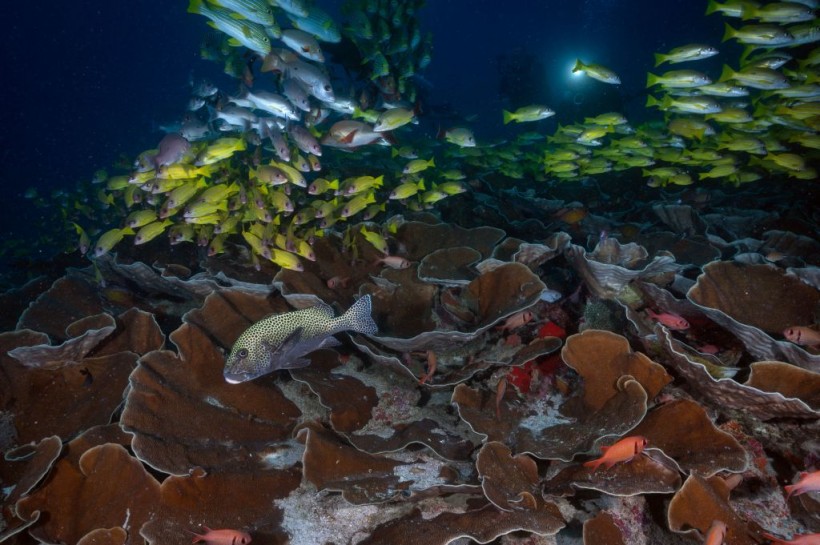The latest report showed that deep-sea corals, which lived 540 million years ago, could be the first species to glow in the dark.
Bioluminescence is crucial for many marine creatures to evade predators and look for potential prey, indicating its importance for survival. Additionally, some animals, including sharks and squids, can glow due to chemical reactions.
Glow-in-the-dark species are more common in the deep sea. Understanding the state and different species will help understand more about the deep sea, which is still considered unexplored and home to various animals.
Ancient Corals and Bioluminescence

In a recent report published in Proceedings of the Royal Society B, researchers studied ancient animals that could be the first species to glow in the dark, mainly found in deep oceans.
The study indicated that the corals could date back 540 million years ago. Light signaling, or glowing in the dark, was one way for animals to protect themselves, significantly intimidating potential threats. Some animals displayed different degrees of luminescence underwater.
To study the varying bioluminescence, the researchers used genetic data from 185 coral species. This indicates that these traits were passed to other animals or descendants, suggesting that the ability was maintained and improved.
Additionally, the report highlights the evolution of bioluminescence and evolutionary biology in understanding different species. Understanding the bioluminescent capabilities and emergence can provide new insights into the evolution history of said animals.
Deep-Water Shark and Ray Threats
In a related report about deep-water species, recent research raised concerns about the threats to sharks and rays, which could suffer from extinction. Researchers warned that one in seven species could be extinct. The research findings were published in Ecology Indicators.
Currently, most marine species, including sharks and rays, are threatened by fishing gear entanglement, climate change, pollution, and bycatch by commercial fisheries.
In the eight-year study, the researchers observed over 500 shark and ray species, indicating concerns about the decline of 60 species. Overfishing was shown to be one of the primary threats to deep-sea sharks. Additionally, the increasing pressures are challenging for deep-sea animals to survive.
Due to potential risks, the researchers emphasized the urgent need for effective and proactive conservation efforts to protect them from decline or extinction.
However, deep oceans are not easy and complex to monitor, and it has remained a challenge for conservationists and scientists.
Also Read: Anglerfish Practiced Sexual Parasitism To Thrive 55 Million Years Ago, Study Finds
Strawberry Feather Star with 20 Arms Found in Antarctica
In a recent Nature World News (NWN) report, researchers unearthed a unique species of Strawberry Feather Star, which belongs to a class of sea urchins. The animal, with 20 arms, was discovered in Antarctica. The report was published in Invertebrate Systematics.
Related Article: Deep Water Sharks, Rays Under Threats: One in Seven Species Can Suffer From Extinction
For more similar, don't forget to follow Nature World News.
© 2024 NatureWorldNews.com All rights reserved. Do not reproduce without permission.
![Bison Herd Consisting of 170 Reintroduced Individuals in Romania Could Store Carbon Emissions Equivalent to 43,000 Cars [Study]](https://1471793142.rsc.cdn77.org/data/thumbs/full/70533/280/157/50/40/bison-herd-consisting-of-170-reintroduced-individuals-in-romania-could-store-carbon-emissions-equivalent-to-43-000-cars-study.jpg)




